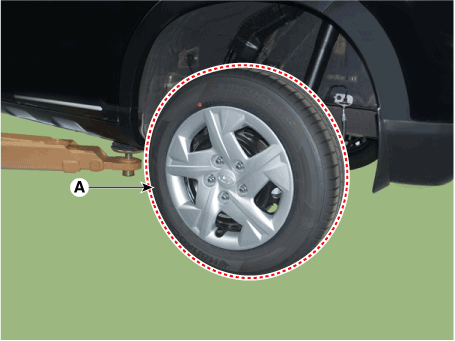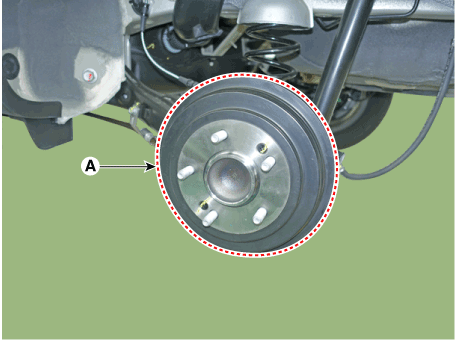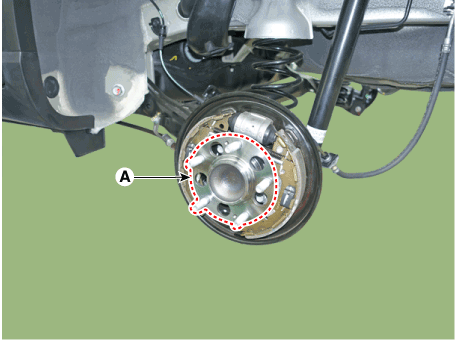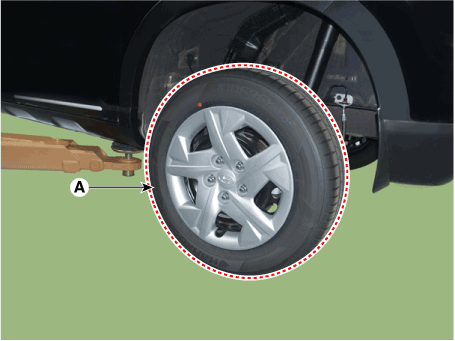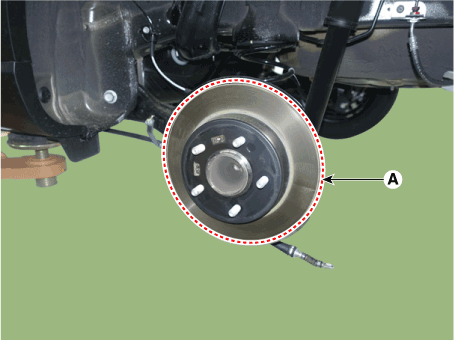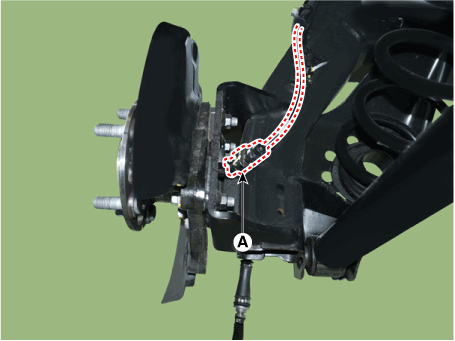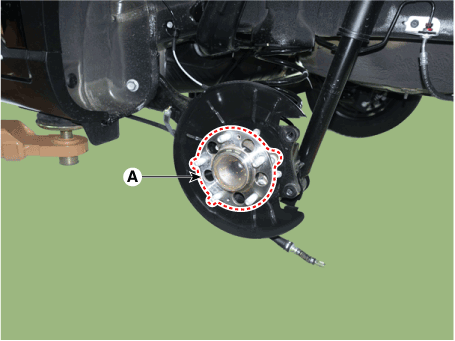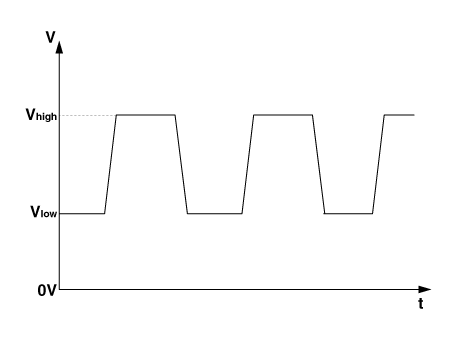Hyundai Venue: ABS(Anti-Lock Brake System) / Rear Wheel Speed Sensor. Repair procedures
Hyundai Venue (QX) (2020-2025) Service Manual / Brake System / ABS(Anti-Lock Brake System) / Rear Wheel Speed Sensor. Repair procedures
| Removal |
[Rear Drum Brake Type]
| 1. |
Loosen the wheel nuts slightly.
Raise the vehicle, and make sure it is securely supported.
|
| 2. |
Remove the rear wheel and tire (A) from the rear hub.
|
| 3. |
Disconnec the rear wheel speed sensor connector (A).
|
| 4. |
Loosen the screw and then remove the rear drum brake (A).
|
| 5. |
Loosen the hub mounting bolt and then remove the hub (A) from torsion
beam axle.
|
[Rear Disc Brake Type]
| 1. |
Loosen the wheel nuts slightly.
Raise the vehicle, and make sure it is securely supported.
|
| 2. |
Remove the rear wheel and tire (A) from the rear hub.
|
| 3. |
Remove the rear brake caliper.
(Refer to Brake System - "Rear Disc Brake")
|
| 4. |
Loosen the screw and then remove the rear disc brake (A).
|
| 5. |
Disconnec the rear wheel speed sensor connector (A).
|
| 6. |
Loosen the hub mounting bolt and then remove the hub (A) from torsion
beam axle.
|
| Installation |
| 1. |
To install, reverse the removal procedure.
|
| Inspection |
| 1. |
Measure the output voltage between the terminal of the wheel speed sensor
and the body ground.
|
| 2. |
Compare the change of the output voltage of the wheel speed sensor to
the normal change of the output voltage as shown below.
|
Other information:
Hyundai Venue (QX) (2020-2025) Owners Manual: Securing a child restraint with the LATCH anchors system
To install a LATCH-compatible child restraint in either of the rear outboard seating positions: 1. Move the seat belt buckle away from the lower anchors. 2. Move any other objects away from the anchors that could prevent a secure connection between the child restraint and the lower anchors...
Hyundai Venue (QX) (2020-2025) Service Manual: Sub Frame. Repair procedures
Removal 1. Loosen the wheel nuts slightly. Raise the vehicle, and make sure it is securely supported. 2. Remove the front wheel and tire (A) from front hub. Tightening torque : 107...
Categories
- Manuals Home
- 1st Generation Venue Owners Manual
- 1st Generation Venue Service Manual
- Check Tire Pressure
- Warning and Indicator Lights
- Rear Combination Light Bulb Replacement
- New on site
- Most important about car
Fuel gauge

This gauge indicates the approximate amount of fuel remaining in the fuel tank.
Information
The fuel tank capacity is given in chapter 2. The fuel gauge is supplemented by a low fuel warning light, which will illuminate when the fuel tank is nearly empty. On inclines or curves, the fuel gauge pointer may fluctuate or the low fuel warning light may come on earlier than usual due to the movement of fuel in the tank.
Copyright © 2025 www.hvenueqx.com


